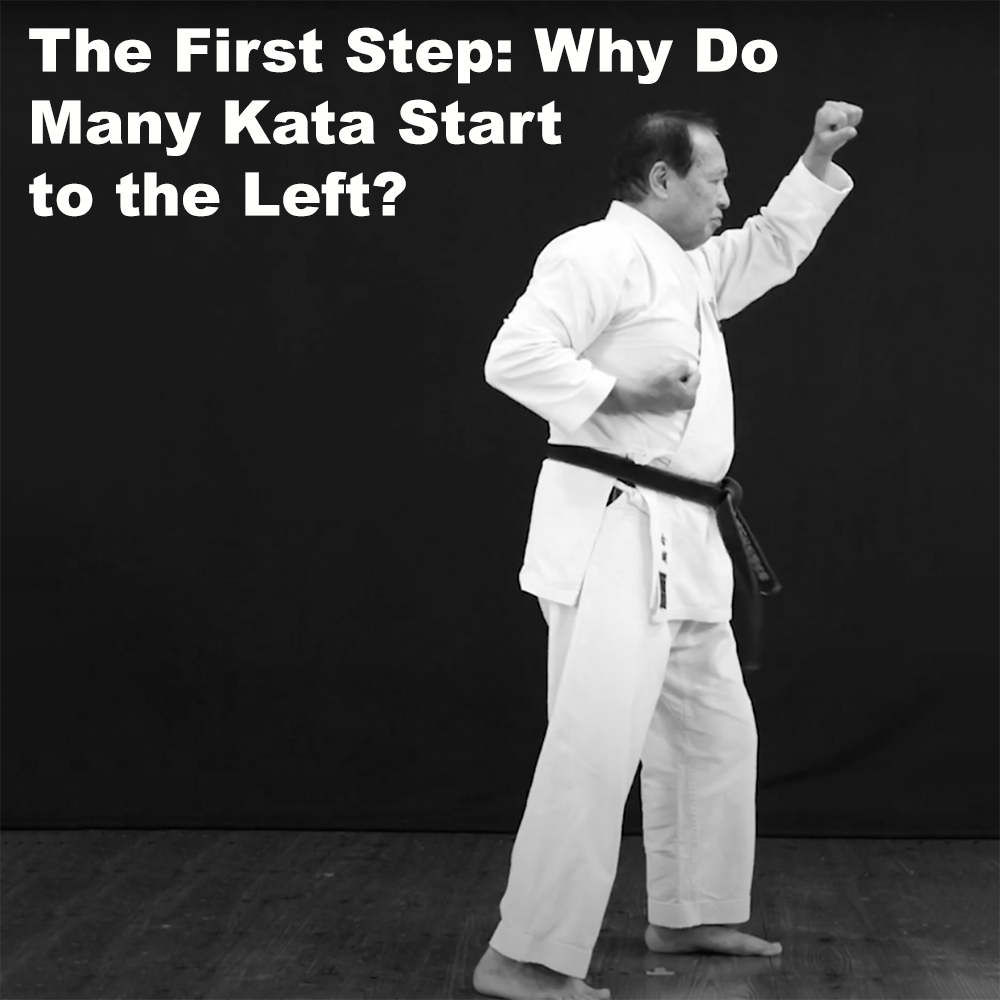
(Approx 2 minute 30 second read)
I was asked a great question: “Do all kata start with a move to the left? Are there any kata that start to the right?”
.
Many beginners learn kata such as ‘Fukyugata’, ‘Gekisai’, and the ‘Pinan’ kata, which all share one commonality – the first movement goes left. But the answer is no, not all kata start with a movement to the left.
.
It’s important to note that you are ‘not’ being attacked from the left simply because your first movement is to the left. The emphasis on starting to the left in many kata stems from a combination of practical and strategic reasons. One of the reasons for this is that we often focus on dealing with right-handed attacks first. In fact, even basic ‘kihon’ practice or any form of stepping-kumite tends to address right-handed or right-sided attacks first.
.
Why is this? There are a high percentage of people who are right-handed. In many combative systems, training often begins by addressing the most common scenario – defending against a right-handed attacker. This can explain why some kata begin by moving left, positioning you away from the opponent’s dominant right side.
.
However, this is only part of the story and is certainly not the only reason.
.
The leftward movement isn’t solely about reacting to a right-handed attack. Kata are designed with deeper strategic principles, such as positioning, distancing, and maintaining or upsetting balance. And any angle in relation to your opponent, can place you in a better position to control, counter-attack, or evade, regardless of the opponent’s dominant hand.
.
Historically, kata were developed with the assumption of close-quarter combat, where movements are designed to give you the upper hand by controlling angles and positioning. The first move could just as easily be to the right in other situations, depending on the specific tactical needs.
.
While it may be practical to start by addressing right-handed attacks, kata movements are often mirrored to develop ambidexterity, ensuring you can handle attacks from both sides. Training both sides of the body equally is essential in karate, and kata help cultivate this balance.
.
This is why some kata start left but quickly incorporate movements to the right, preparing you to adapt to attacks regardless of your opponent’s handedness.
.
Modern interpretations of kata sometimes describe the applications as defending against attacks from various directions, like attackers placed at different points on a compass. While this may be visually appealing for demonstrations, it’s not a realistic or historical approach.
.
Kata assumes a more practical scenario: you are engaged in close combat with a single opponent directly in front of you, and each movement is designed to address that threat.
.
Even though the initial move may be to the left, kata provide techniques to manage threats from the opponent’s non-dominant side as well. For example, if the opponent attempts to grab or push with their left hand before committing to a right-handed strike, kata offer movements that can simultaneously address both sides.
.
By moving left, you may be stepping away from the primary threat – the right punch – but kata ensure that you remain capable of controlling their non-dominant side as well.
.
Ultimately, kata teach us to stay centered on the opponent and gain an advantage through proper positioning, whether we move left or right, move in or out. Every movement is designed with intention, helping us develop the ability to respond to various attacks, no matter the handedness of the opponent.
.
In kata, every movement is intentional, combining tactical advantage and ambidexterity to help us adapt to any situation, ensuring that we remain balanced and in control.
.
Written by AC.
.
.
Photo Credit: Tsuneo Kinjo 9th Goju-Ryu practicing Gekisai Dai Ichi
.
